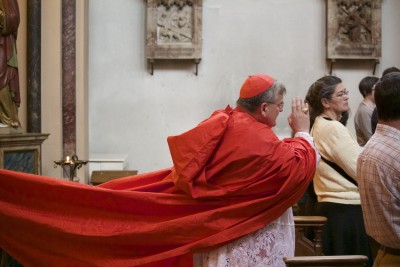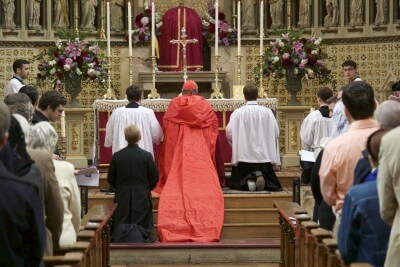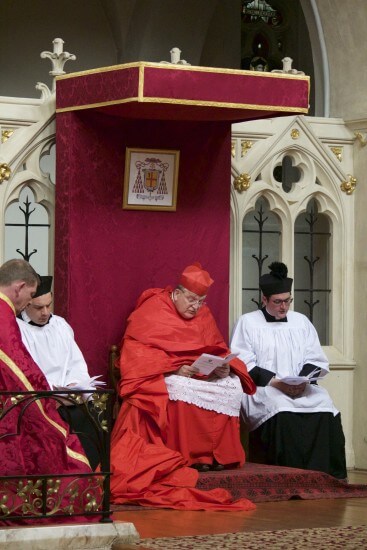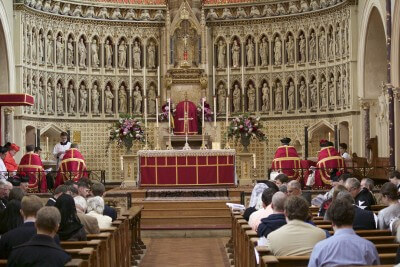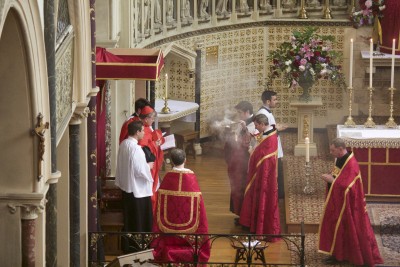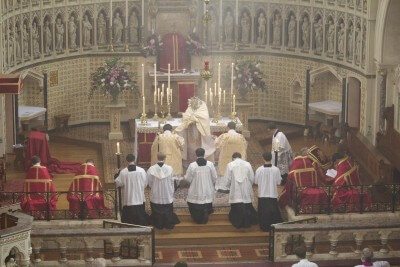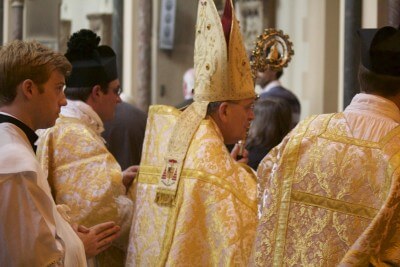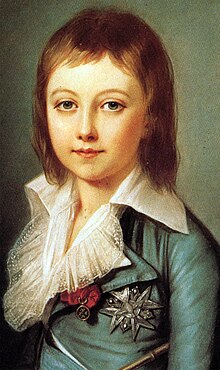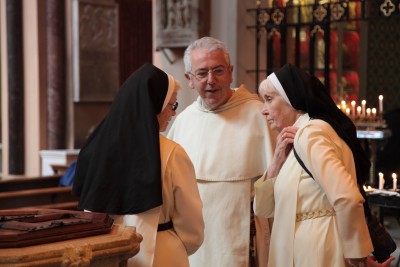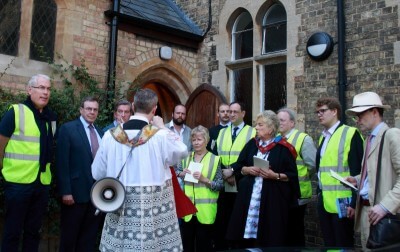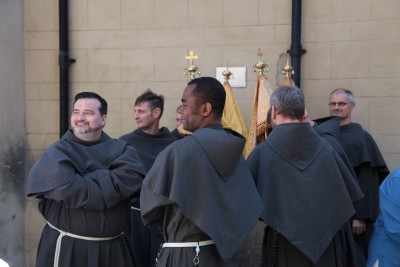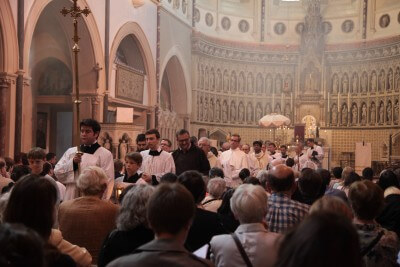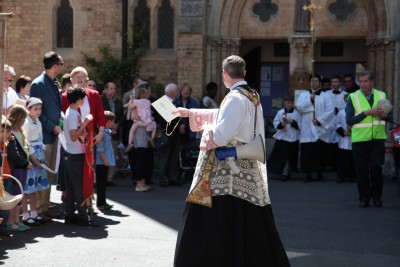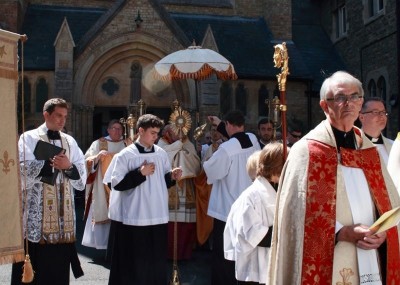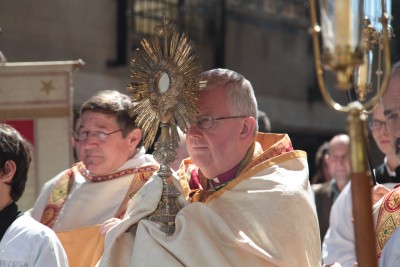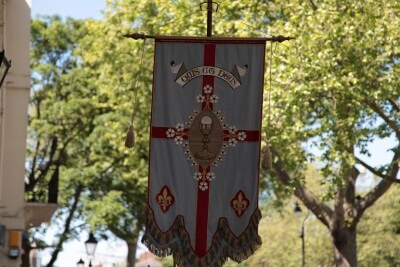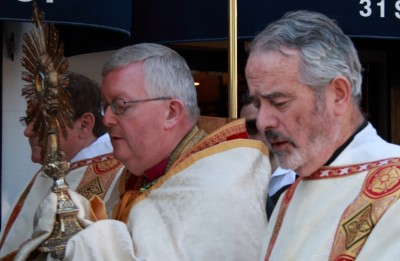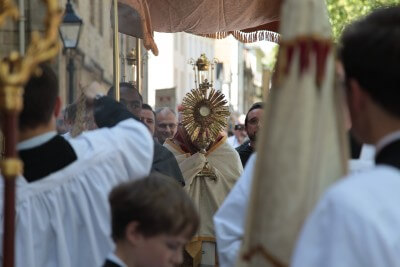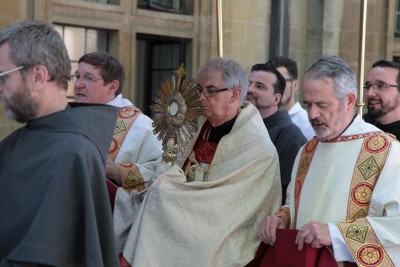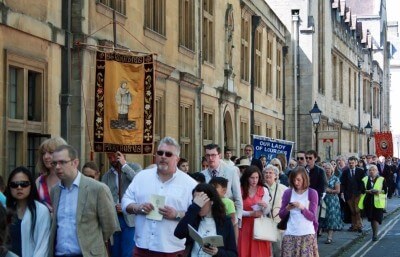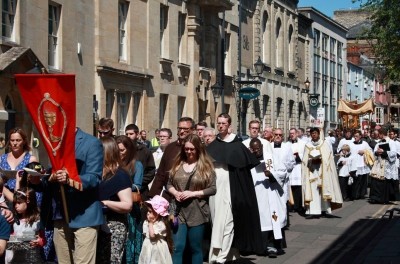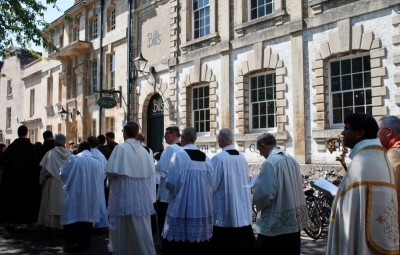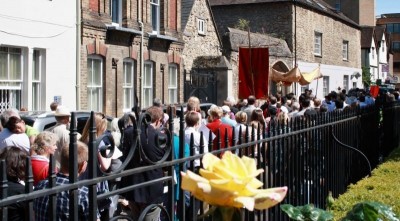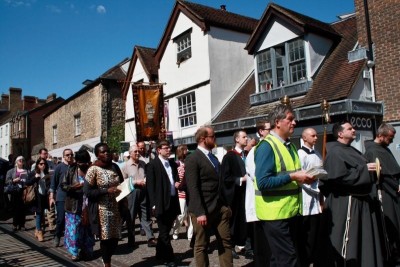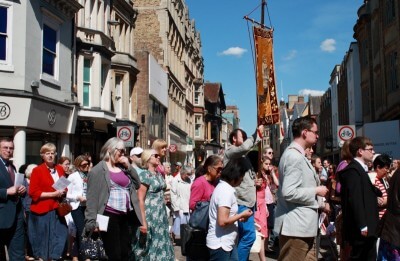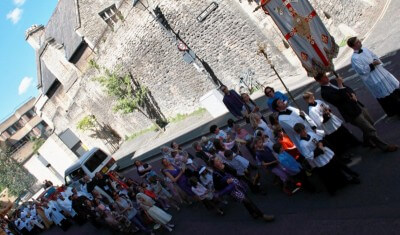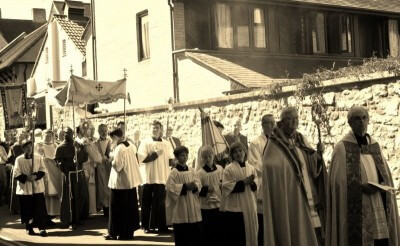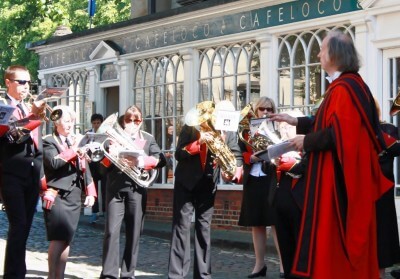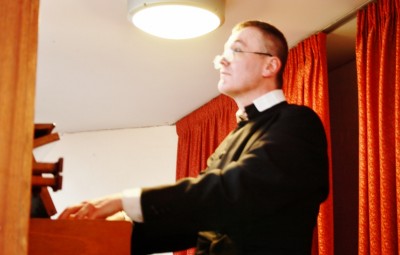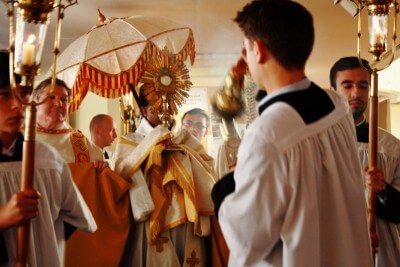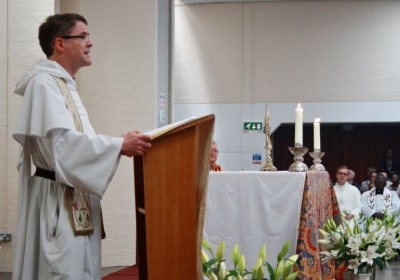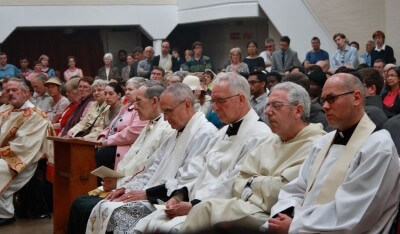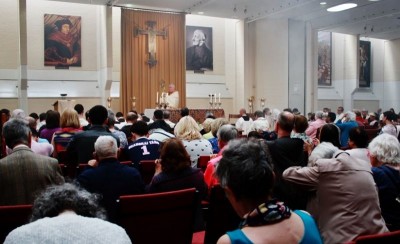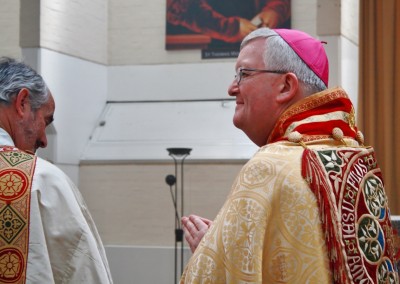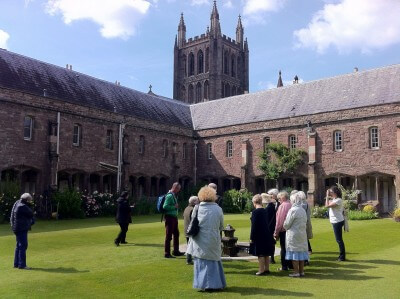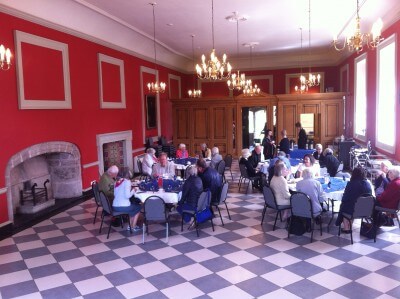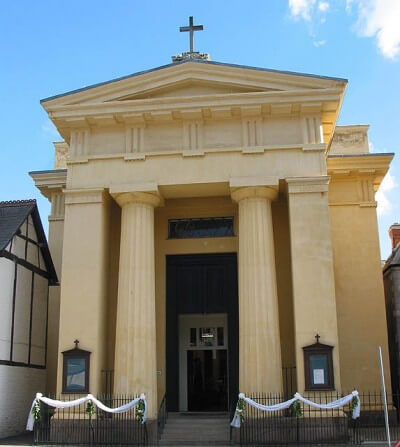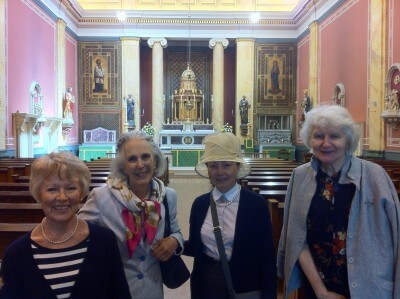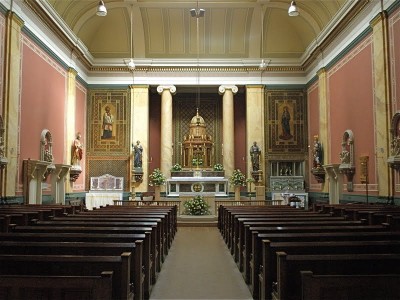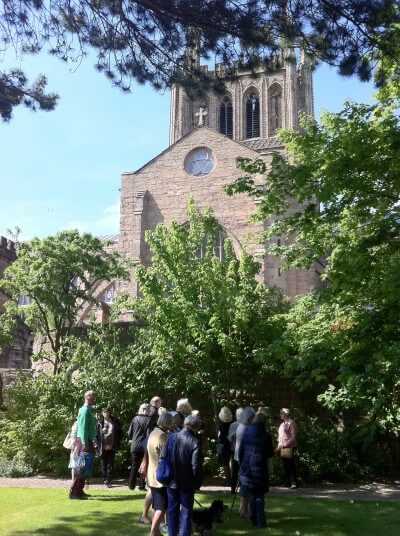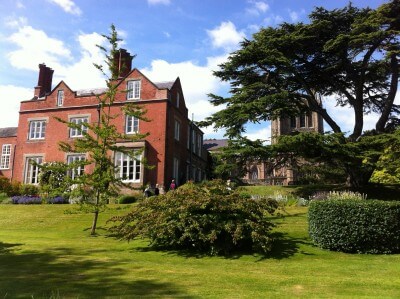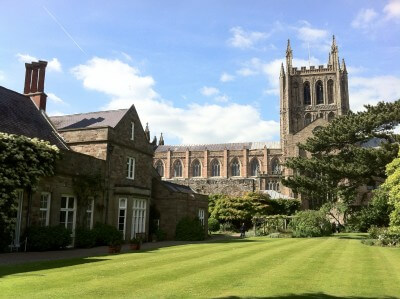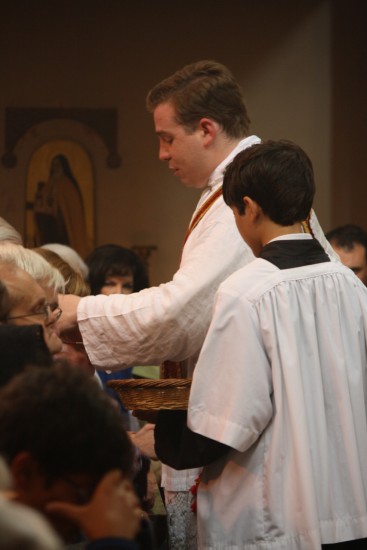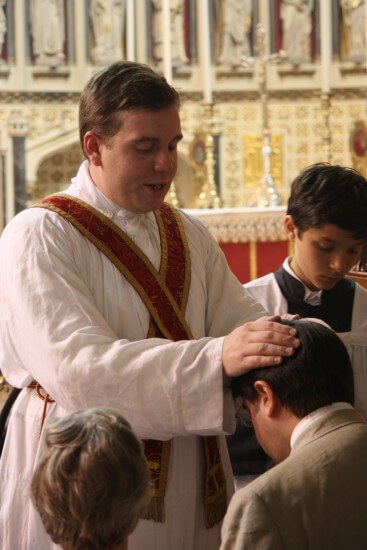Today is the feast of St Richard of Chichester. I have always had an interest in him as he was on eof the patrons, along with Our Lady and St Dominic of the Dominican friary, founded in 1256, three years after his death, in my home town of Pontefract, and that was to be the only medieval foundation dedicated to him.
Richard Wych was a Worcestershire man, born at Droitwich (then known as Wych) in about 1197. His family were yeomen farmers. His parents died while he was still at school, and the property was administered by guardians, who so mismanaged the estate that Richard and his brother and sister were left almost penniless. The elder brother was equally unable to cope, and it was Richard who got the farm back on its feet, by sheer hard manual work. His brother offered to hand over the whole inheritance to Richard, but with the proviso that he “married and settled down”, as we would say. Richard however had his mind set on being a clerk – a member of the clergy, though that did not necessarily imply priesthood. At all events, he was now free to go to Oxford, where he joined the school of Edmund Rich, the future archbishop of Canterbury and Saint. Edmund had a profound influence on Richard, and their friendship was to be lifelong. After graduating in Law from Oxford, Richard went on to study in Paris and Bologna. In 1235 he returned to Oxford, where he was elected Chancellor.
By now his mentor Edmund had become Archbishop of Canterbury, and within two years he called him to be his own Chancellor. For the next three years Richard lived and worked with Edmund, and grew to revere him for his pastoral concern, his devotion to prayer, and his asceticism. In 1240 he accompanied Edmund on a visit to Rome, and was at his bedside there when he died.
Up to this time there is no indication that Richard felt a call to the priesthood. But now, in his early forties, there came a change. Instead of returning home from Rome, he went to Orleans to study theology, and there after two years he was ordained priest.
Returning to England, he took up the pastoral duties of a parish priest in Kent, but he was not to be left in obscurity for long.
In 1244 the see of Chichester fell vacant. The King, Henry III, instructed the Chapter to elect his own nominee, a certain Robert Passelewe, which they duly did, even though it was well known that this Passelewe was a thoroughly unsuitable candidate. Archbishop Boniface of Canterbury decided to make a stand against what had become in practice royal appointment to episcopal sees, and took the brave and unprecedented step of quashing the election and nominating to Chichester Richard, his Chancellor. The King’s immediate reaction was to refuse to accept the homage of Richard, or to release to him the “temporalities” (the property and income) of the see, which were legally held by the Crown during an interregnum. Richard appealed to the Pope, who upheld his appointment and personally consecrated him bishop at Lyons on 5th March 1245.
It was an unhappy beginning. When Richard came to Chichester to take possession of his see, he found the gates of the city closed against him and access to his estates barred, by order of the King. He was given lodging, in defiance of the royal will, by Simon, the Rector of Tarring, who became a lifelong friend. There and then Richard began the work of chief pastor, working from the Rectory at Tarring. He visited assiduously the parishes, monasteries and homes for the sick and poor in the diocese. After sixteen months the King relented, under threat of excommunication by the Pope, although he still refused to restore the income that had accrued to the royal treasury during the dispute. Richard took possession of his Cathedral amid great rejoicing.
The Bishop could now devote himself fully to much-needed reforms. He instituted diocesan synods, at which the teaching and laws of the Church were expounded, and local statutes enacted. These statutes covered a wide range. The sacraments were to be administered without payment, Mass was to be celebrated in a dignified manner, clergy must practice celibacy, observe residence and wear clerical dress. There were instructions regarding the hearing of confessions, and clergy were reminded of their duty of hospitality and care of the poor. At the same time he made provision for their proper payment and security of tenure. The laity were obliged to attend Mass on Sundays and Holy Days, and all must know by heart the Lord’s Prayer, the Hail Mary and the Creed.
He also had to face the task of fund-raising for the maintenance of the Cathedral. He revived the practice of “Pentecostals”, directing that all parishioners should visit the cathedral church once a year at Whitsuntide, there to pay their dues. Those who lived too far away could fulfill this duty at Hastings or Lewes, and those unable to attend at all must still hand in their dues.
Richard set great store by hospitality, and he kept a good table; but he himself was frugal, and refused the good things he provided for his guests. He practised penance, wearing a hair shirt to the day of his death. He was a man of compassion, his biographer mentioning particularly his concern for handicapped children and convicted criminals. His early life on the farm is echoed in some of the miracle stories told about him – the out-of-season flowering of a fruit tree at Tarring, good advice to men fishing on the bridge at Lewes, resulting in an exceptional catch.
In 1252 the Pope appointed Richard to preach the Crusade. The Bishop saw this not just as a means of raising money but as a call to renewal of life – much as we would see a Holy Year. He began a tour along the south coast, which eventually brought him to Dover. Here he consecrated a cemetery chapel for the poor, which he dedicated to his friend and teacher, St Edmund, who had been the chief inspiration for his own life’s work. It was his last public function. A few days later he collapsed. His last prayer has come down to us: “Thanks be to thee, my Lord Jesus Christ, for all the benefits thou hast bestowed on me, for all the pains and insults thou hast borne for me. And thou knowest, Lord, that if it should please thee I am ready to bear insults and torments and death for thee; and as thou knowest this to be the truth, have mercy upon me, for to thee do I commend my soul.” He died on 3rd April 1253. He was about 56 years of age, and had been bishop no more than eight years.
His body was brought back to Chichester, where he was immediately hailed as a saint. He was canonised within the decade, and his body placed in a new shrine behind the High Altar in his cathedral, where it remained until destroyed at the Reformation. But today Richard is honoured again in that same spot, as a Saint and patron of Sussex.
Text: Universalis website
A Tribute to Saint Richard by John R. H. Moorman, sometime Bishop of Ripon and a noted church historian:
A great pastor, a great lover of God and man
|
|---|
Facetus, largus, curialis, vultu hilaris (“jolly, warm-hearted, courteous, and of cheerful countenance”); in these words Friar Ralph Bocking described his old master, St Richard of Chichester, whom he served for many years as companion and confessor. There was something big and impressive about St Richard, something large, warm, and comfortable. If the Church had not seen fit to canonize him, he would certainly have been canonized by popular opinion, for he was just the sort of man whom people loved and revered.
Richard is remembered not as a great scholar or a great political figure, but as a great pastor – a wise, diligent and saintly bishop who administered his diocese with a perfect mixture of what St Paul calls “goodness and severity”, of discipline and love. He found himself called to the administration of a diocese sadly disorganized by neglect and by the fact that he himself was, for the first two years, a homeless vagrant. Yet he pulled it together. As early as 1246, while he was still under the royal ban, he published his Statutes which he expected all his people to observe.
He was a strict disciplinarian – in his diocese, in his household, and in himself. Clergy who were lazy or immoral came in for severe rebuke, and he expelled one man from his living in spite of appeals from some of the highest personages in the land, including the king and queen. So also with the laity. When the people of Lewes dragged a thief out of a church, in which he had sought sanctuary, and lynched him, Richard made them dig up the body, carry it on their shoulders to the church, and give it Christian burial. In his own household he was much loved as a wise father, though here again he ruled with severity. He expected high standards of honesty and uprightness among his household and dismissed those who misbehaved. But he was above all things severe with himself. Unlike many of his fellow bishops, he hated ostentation and display, and always dressed soberly and fared simply. Meanwhile his greatest self-discipline was in the realm of his prayer life. Early visitors to his chapel sometimes found the bishop stretched on the ground, having spent all night in prayer. He used always to reproach himself if the birds were awake and singing their songs before he was at his prayers and praises before the altar of God.
Richard was therefore a disciplinarian; but the quality for which he was so greatly loved by his people was his generosity and affection. He loved to give things away, to the great distress of his stewards and bailiffs who were trying so hard to restore the ravaged resources of the diocese. When he entered a village he would ask the priest to give him the names of any in his parish who were poor or sick, so that he could visit them himself and relieve them with gifts of food or money. Bocking records that, on many occasions, the bishop went out of his way to bury the dead “with his own hands”.
There are many miracles connected with Richard’s life, many of them very human. Once, when celebrating Candlemas at Cake ham, he joined in a procession which vent outside the church, each member carrying a lighted candle. A gust of wind blew all the candles out. Suddenly it was noticed that the bishop’s candle was alight again. “Who lit my candle?” said Richard to one of his chaplains. “No one, my Lord”, came the reply. Richard looked again at the candle, then put his finger to his lips and said: “Not a word”. Out of a century which produced many great lights the candle of St Richard of Chichester still burns brightly, for he was a great saint, a great pastor, a great lover of God and man.
Text: Universalis - calendar for the Archdiocese of Birmingham

